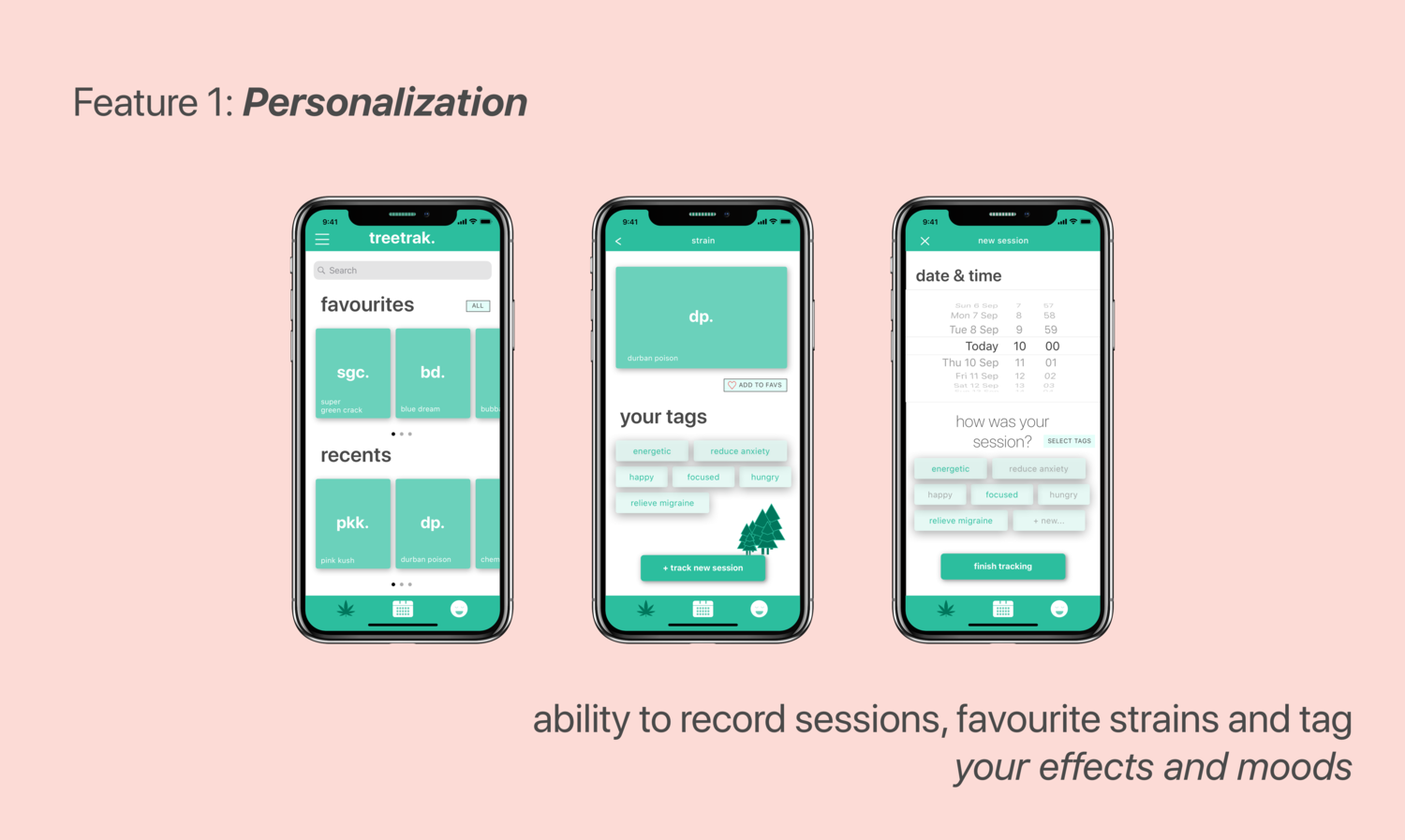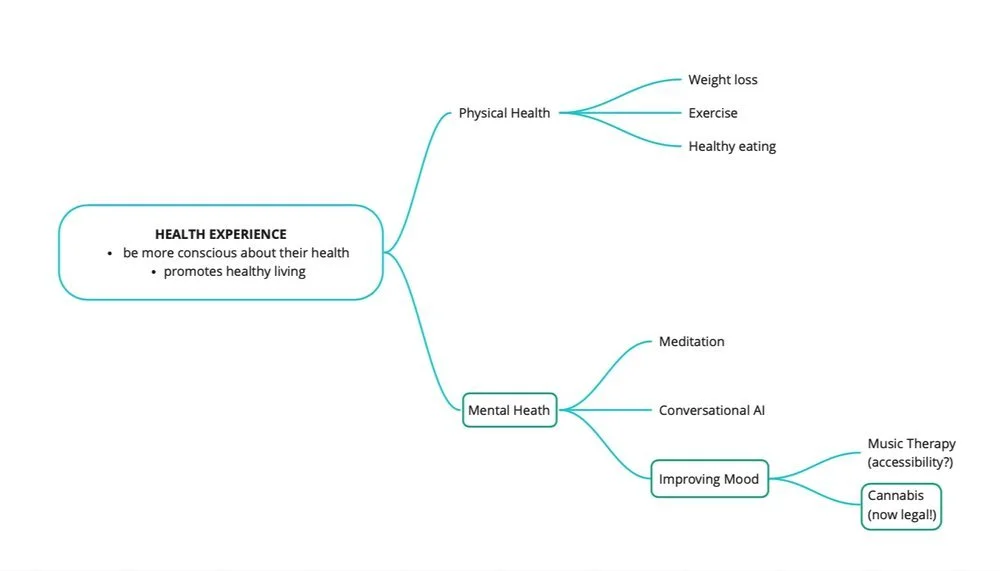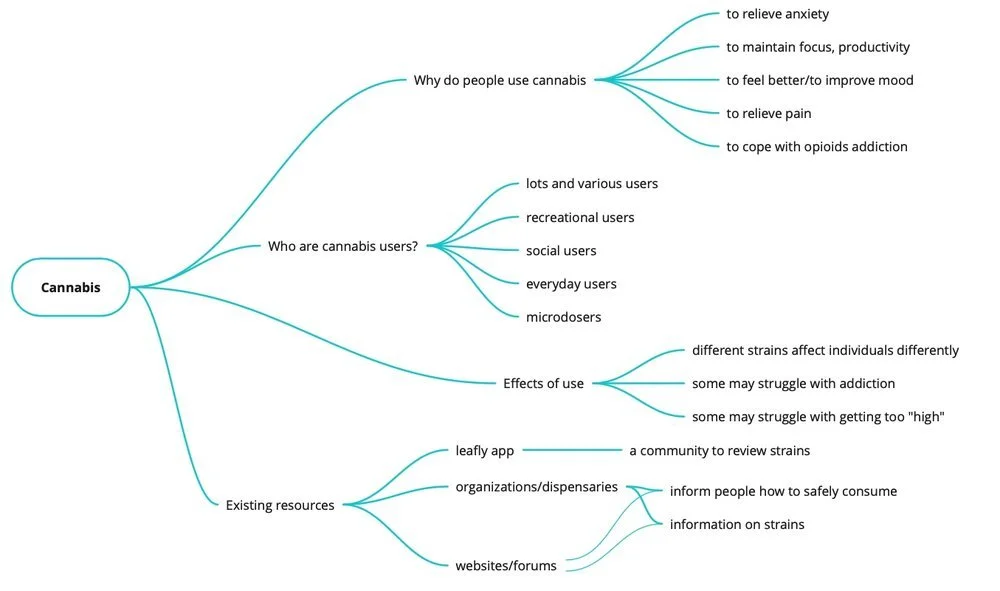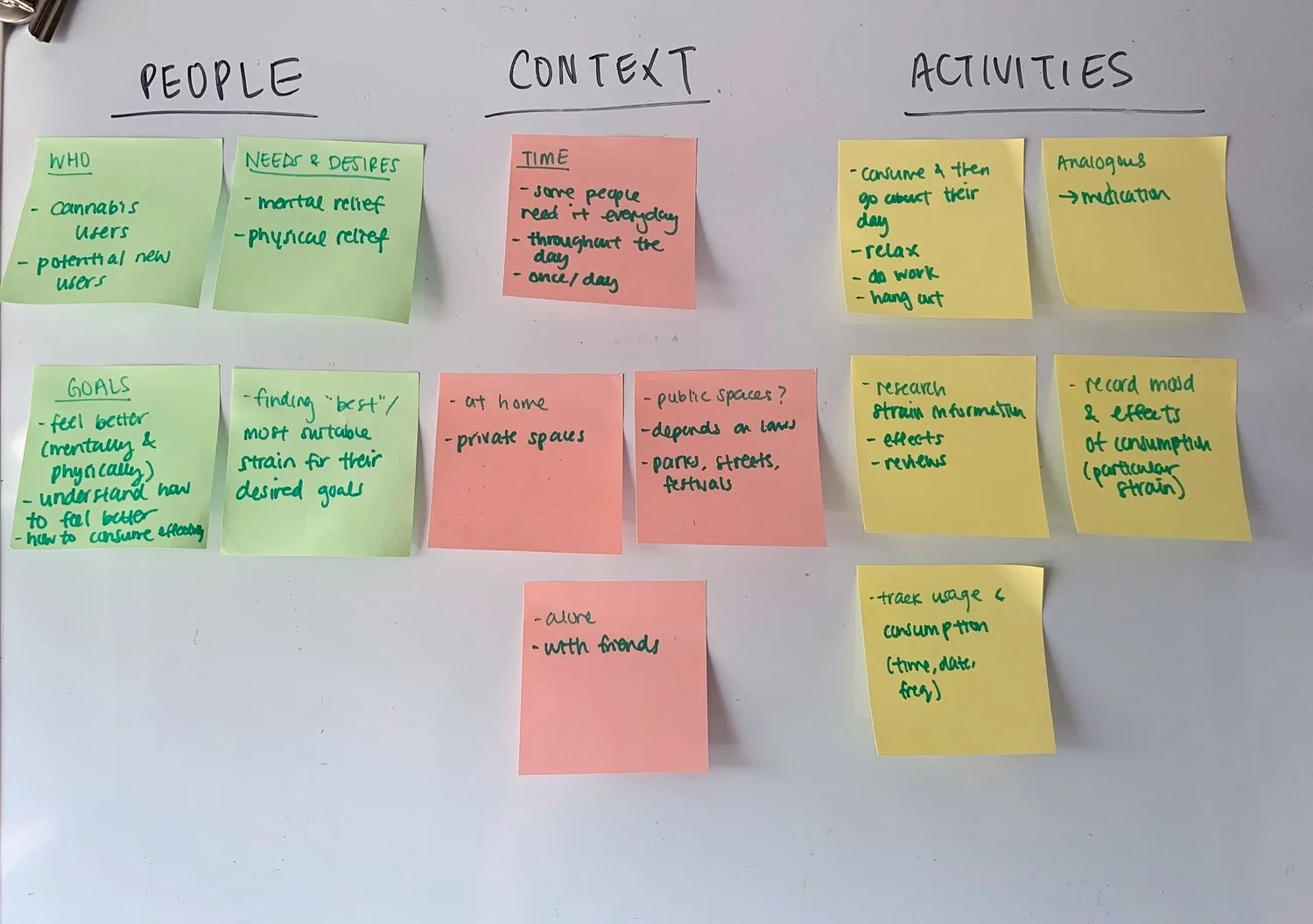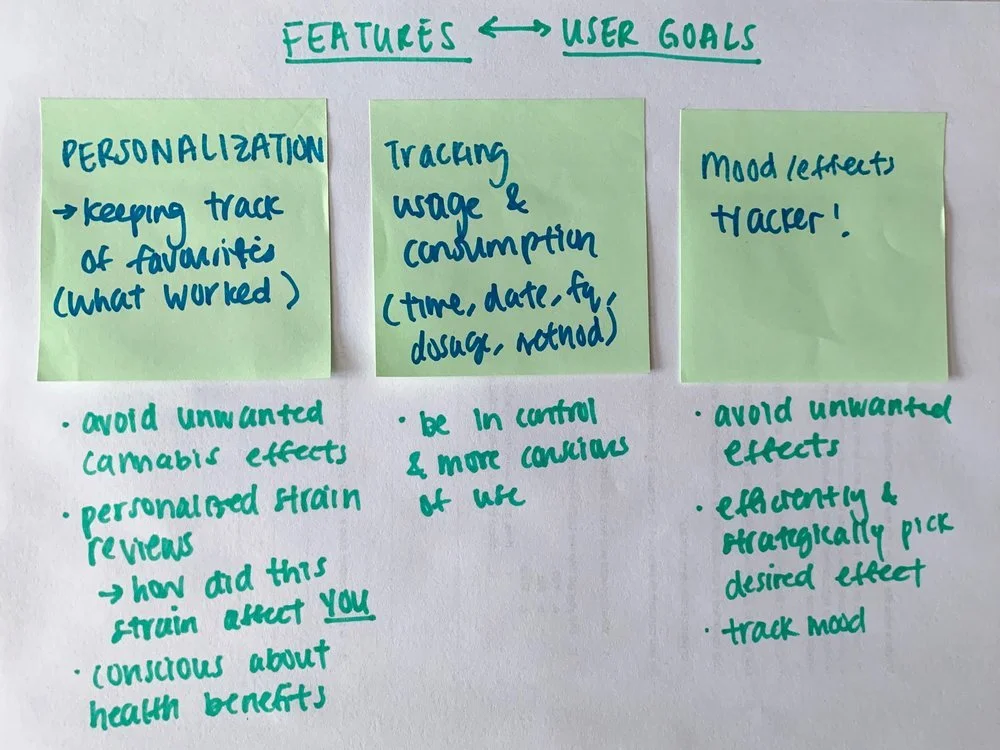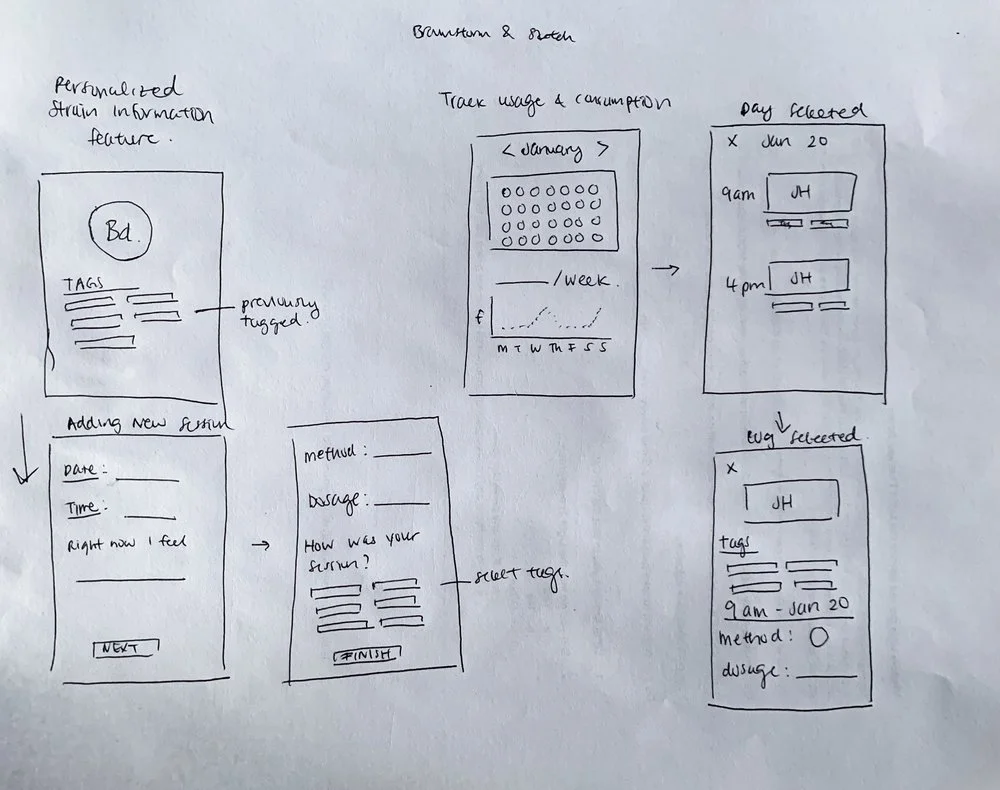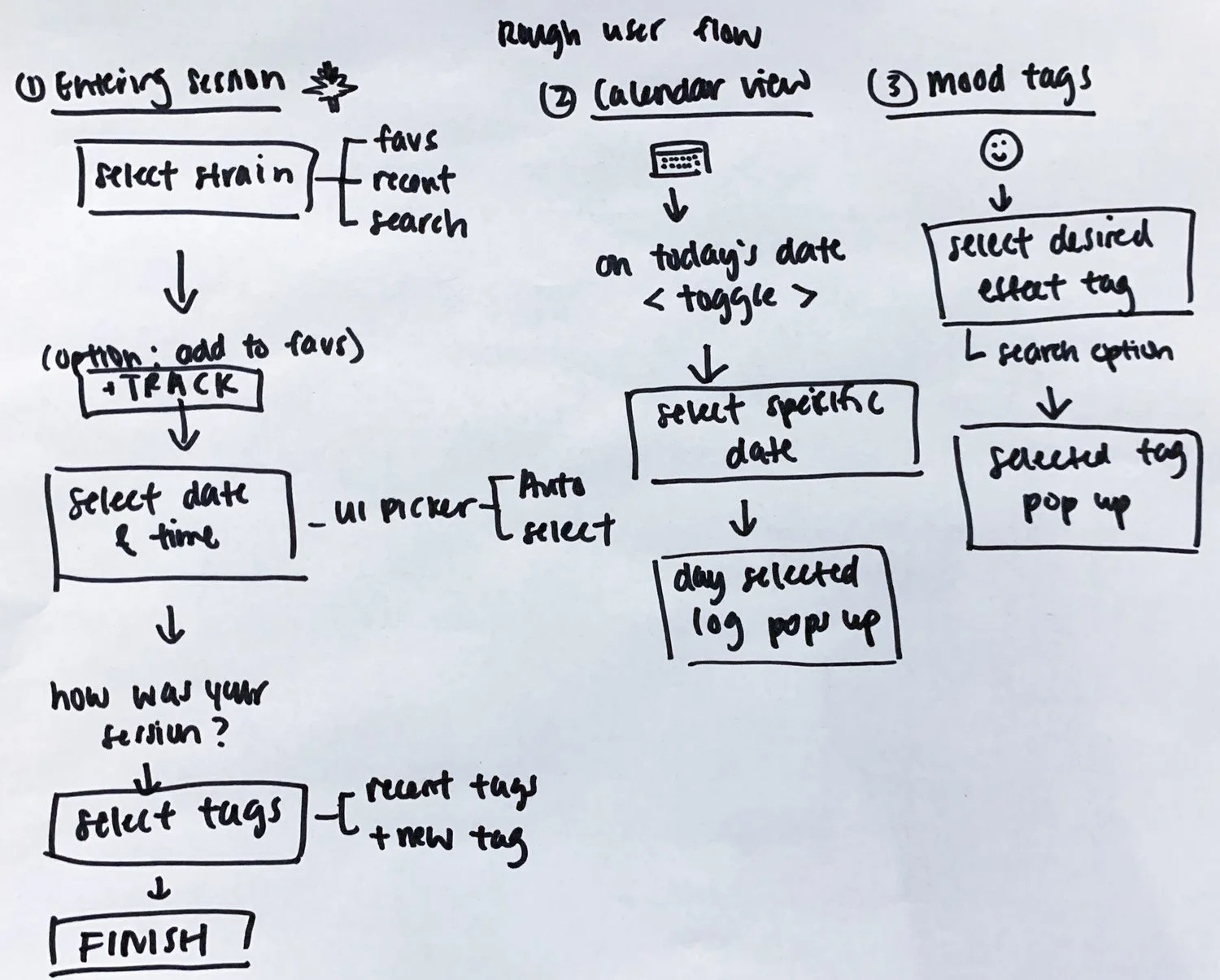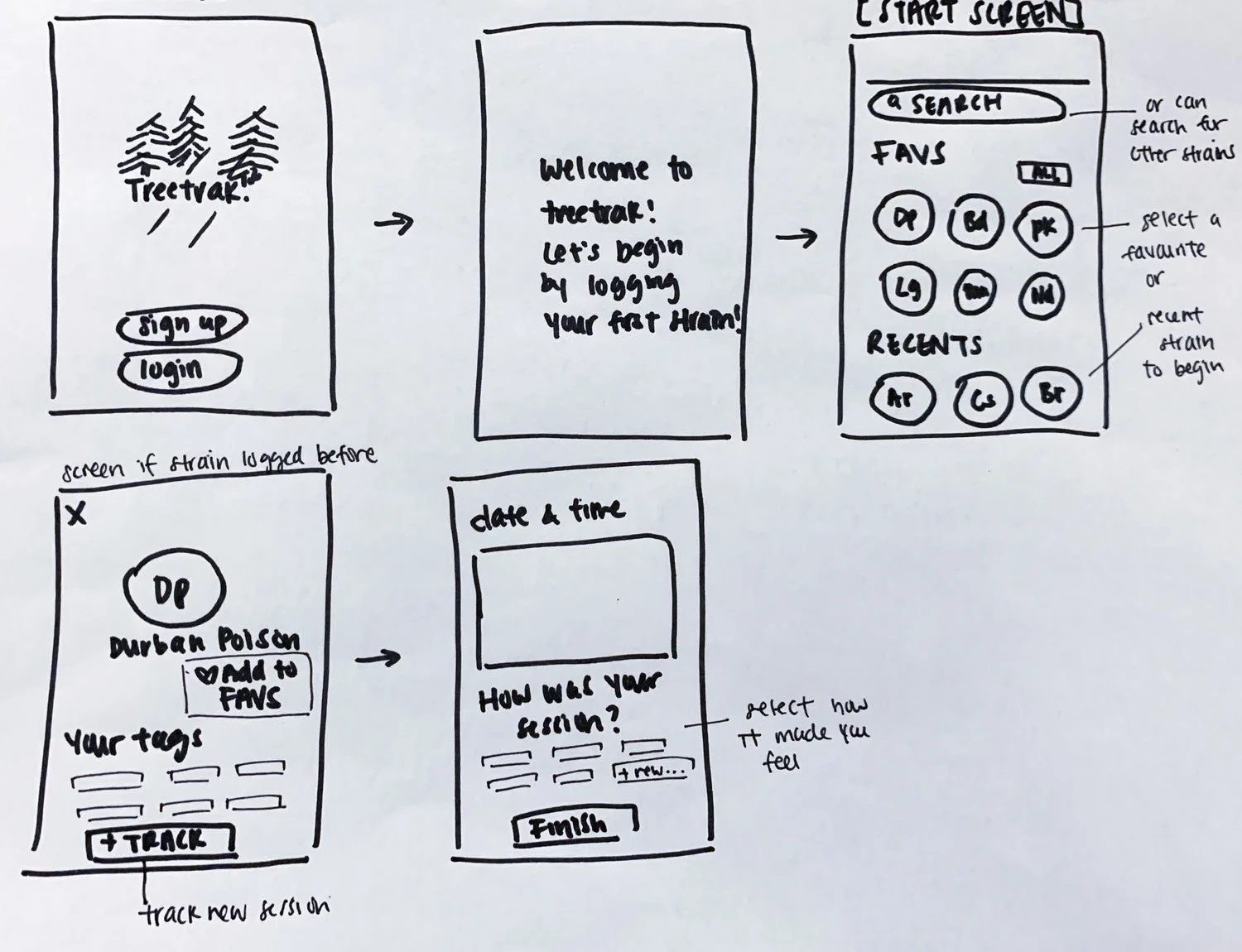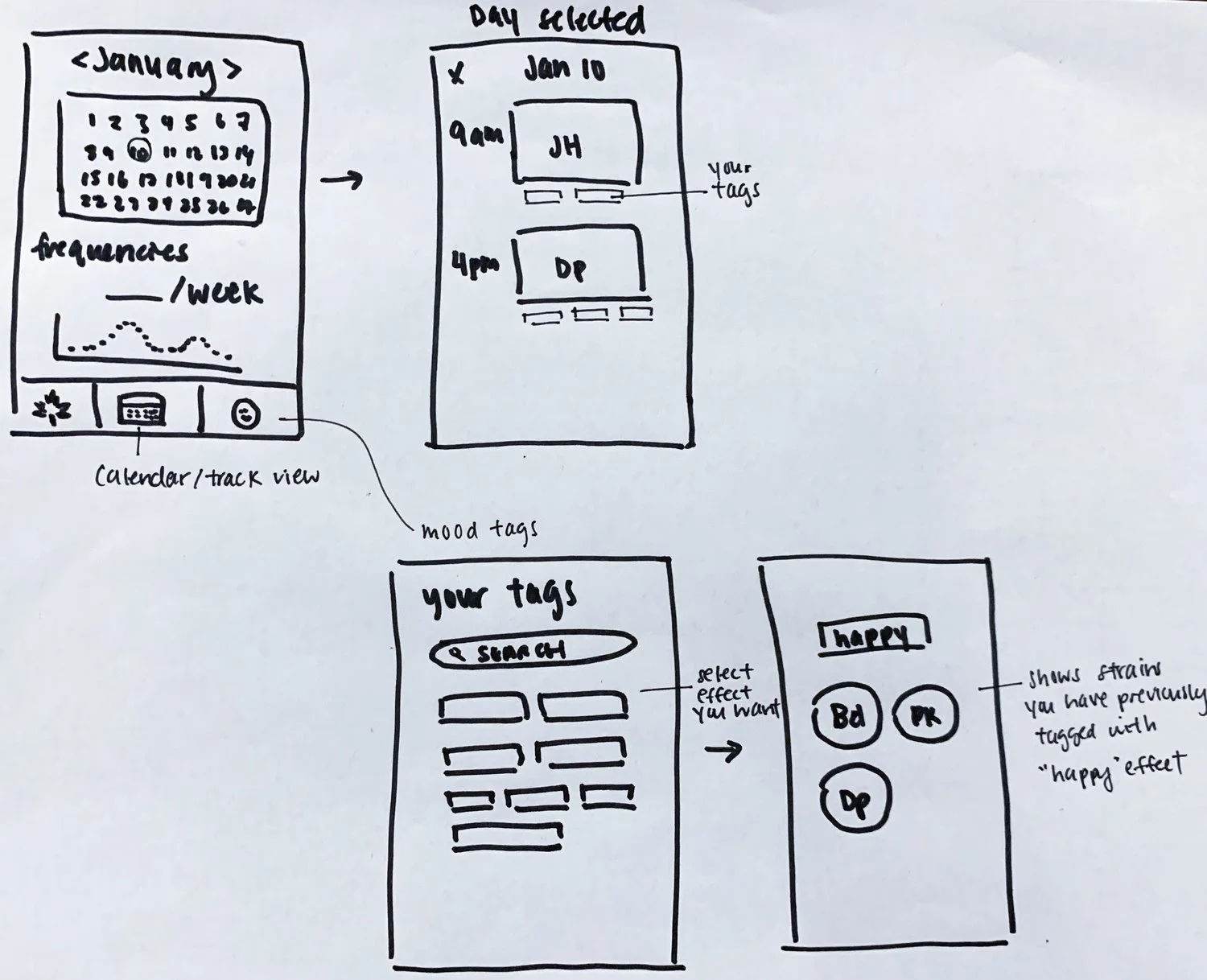treetrak.
As part of a 4 hour design challenge, I created a cannabis tracker app
My role
Product designer
Product vision
Design thinking
Timeline
1 day
“To build an experience that helps people be more conscious about their health and to promote healthy living. A healthy lifestyle can mean physical health and/or mental health.”
The challenge
My solution
What does “health” mean?
I first brainstormed with “Physical Health” and “Mental Health”. Weight loss, exercise and meditation apps have already been done over and over again. I wanted to focus on improving mood.
Discovery
I focused on improving mood digital experience, and this was my goal:
A cannabis app to help people efficiently and effectively use cannabis to improve their health.
Understanding current cannabis use
I created a quick mindmap to understand current users, why people use it, the effects and any problems.
Secondary research
I wanted to gage how many cannabis users there were and understand why some people use it.
Leafly is an award winning app to explore thousands of strains and access map to find nearby dispensaries.
Does a really good job of offering the community information on different strains, reviews, how each strain has affected people
Currently there is no app that allows users to keep track of their own usage and how certain strains affect them
Competitive Analysis: Leafly
people complain that they don’t like a certain strain
people have a “favourite” or a preference for certain strains depending on context of consumption
people complain they use cannabis too much
sometimes a certain strain gives them the opposite effect of what they want: they wanted to reduce anxiety, but it made them more anxious
Anecdotal Evidence (Informal)
“for symptoms of PTSD, anxiety disorders, depression, ADHD, bipolar disorder, chronic pain, insomnia, opiate dependence, and even schizophrenia. In addition, patients use cannabis for neurological conditions such as the spasticity of multiple sclerosis, agitation in dementia, and specific seizure disorders that are unresponsive to standard therapies. Patients also use cannabis to reduce the nausea and anorexia of cancer chemotherapies and to improve their mood and outlook—frequently with their oncologist’s approval.”
- Psychiatric Times
Preliminary research on the effects of cannabis on mental health:
Synthesis
People, Context, Activities
To further understand cannabis user goals, I used the People, Context, Activities tool:
I wanted the experience to benefit ALL cannabis users:
those who use it for chronic pain
those who use it regularly for psychological benefits
those who feel like they need to be more control and be conscious of their use
those who want information on what strains produce what effects
An app that allows users to:
personalize their strain reviews
track mood, effects and consumption
help users be more conscious about health benefits
avoid unwanted cannabis effects
How might we create a personalized experience to help people effectively and efficiently use cannabis to feel better mentally and physically? ”
Opportunity
Ideation
User Goals & Features
I kept the User Goals in mind when brainstorming solutions. I asked “Does this feature satisfy the user goals?”
Brainstorm & Sketching
Thinking back to main user goals, I removed optional details such as “dosage” & “methods” in the adding a new session and viewing the individual session screens. Most users are not aware of what dosage they are taking. I didn’t want to add cognitive load and stress users out when the goal is to help users feel mentally and physically better.
Rough User Flow
Wireframing
Designs
Retrospective & Next steps
This challenge was logistically supposed to take around 4 hours. Due to time constraints, I was unable to do comprehensive UX research, and most of my research was from anecdotal evidence. If I had more time, it would have been insightful to conduct user interviews and ask about current experiences with using cannabis.
Next steps:
Usability tests to measure intuitiveness of app and other generative UX Research tools to further decide on value of features.

